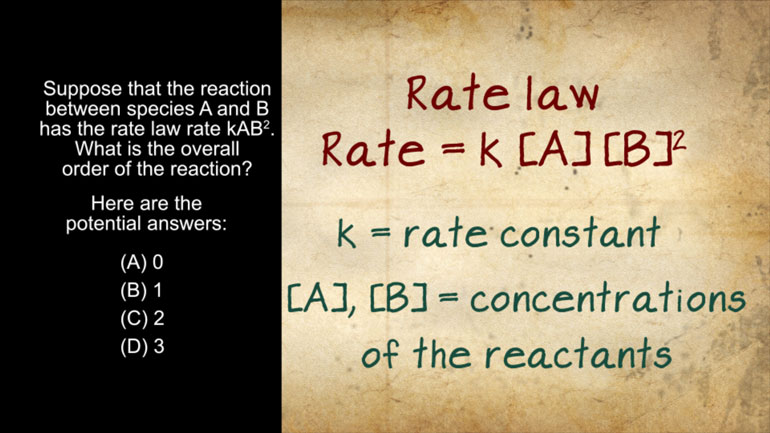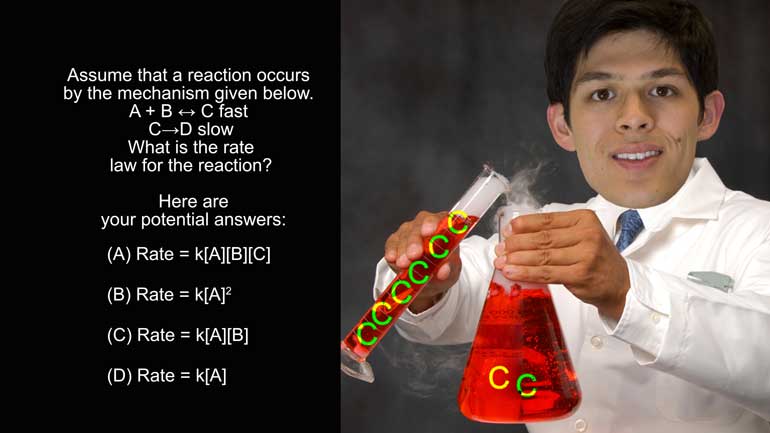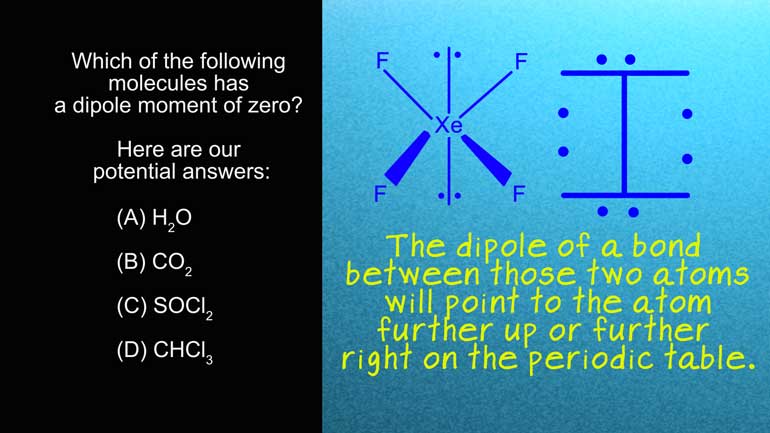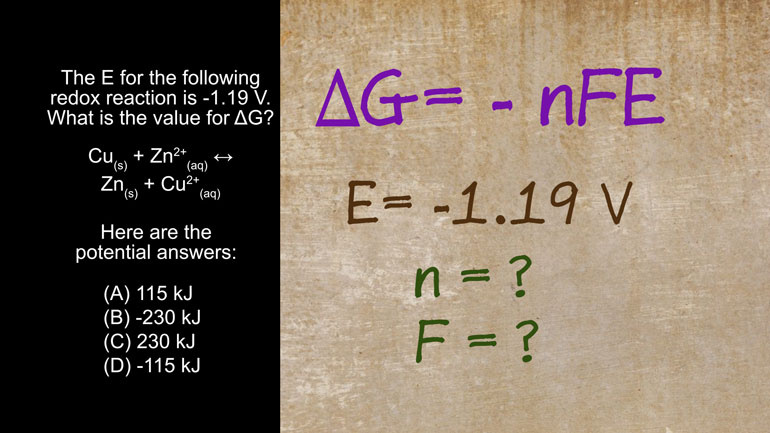ShmoopTube
Where Monty Python meets your 10th grade teacher.
Search Thousands of Shmoop Videos
AP Chemistry 1.3 Rearrangement and Reorganization of Atoms 20 Views
Share It!
Description:
AP Chemistry 1.3 Rearrangement and Reorganization of Atoms. How many moles of oxygen will be required for each mole of propane?
Transcript
- 00:04
Here’s your Shmoop du jour, brought to you by propane, the movement that advocates for [Window panes outside a building]
- 00:09
windows.
- 00:10
Here’s today’s question:
- 00:12
When propane, a flammable compound commonly used in gas grills, is ignited, it will react
- 00:18
with oxygen in a combustion reaction.
Full Transcript
- 00:21
The reaction can be seen below: C3H8 + O2 ? CO2 + H2O
- 00:25
Once this equation is correctly balanced, how many moles of oxygen will be required
- 00:30
for each mole of propane?
- 00:32
And here are your potential answers…
- 00:35
Okay, flex those fingers, crack those knuckles, and practice opening a jar or two, because [Man attempting to open a jar]
- 00:40
we’re gonna have to balance this whole equation by hand.
- 00:43
We’re going to release all the carbon in our propane in the form of carbon dioxide. [Carbon dioxide released from propane]
- 00:47
That means that the carbons contained in carbon dioxide should be equal to the carbons in
- 00:51
the propane.
- 00:52
So let’s balance those guys first. [Carbon molecules balancing on a scale]
- 00:53
Grab your umbrella!
- 00:54
Or whatever people use to balance on tightropes.
- 00:57
Okay, so there are three carbons on the left and one on the right, so we’ll need a coefficient
- 01:01
of 3 in front of that carbon dioxide.
- 01:04
Now we need to ask a question to our hydrogen atoms: water you doing? [Oxygen smiling with two hydrogen atoms]
- 01:09
Well, our hydrogen atoms are all busy forming water molecules when the propane is ignited…
- 01:15
Which means that we need to balance the hydrogens in propane with the hydrogens in water on
- 01:20
the other side of the equation.
- 01:22
Because for every propane, there is an equal and opposite con-pane.
- 01:25
That doesn’t mean anything. [Girl looking at a book]
- 01:26
Don’t look that up.
- 01:27
To balance our hydrogens, we observe that there are two hydrogens in water and eight
- 01:31
in propane, so it’ll take four water molecules to balance the equation.
- 01:34
But we’re not done!
- 01:36
No celebratory fist bumps just yet… [Boy offering a fist bump]
- 01:38
We still have to balance our oxygens.
- 01:40
On the right side of the equation we have 6 oxygens from carbon dioxide and 4 from water
- 01:44
for a total of 10.
- 01:46
On the left, we have two per molecule, so let’s put a five in front of that oxygen
- 01:51
to balance it out.
- 01:52
That must mean that our answer is D, since the coefficient in front of our oxygen molecule [Number 5 circled]
- 01:57
is 5.
- 01:58
Next time, maybe let’s just stick to charcoal. [Santa jumping down a chimney]
- 02:00
Or good ol’ firewood.
- 02:02
Seriously, that propane stuff was way complicated.
- 02:04
Okay, now it’s celebratory fist bump time.
- 02:07
Pound it. [Boy offering a fist bump]
Up Next
AP Chemistry 1.3 Chemical Reaction Rates. What is the overall order of the reaction?
Related Videos
AP Chemistry 1.4 Chemical Reaction Rates. What are the correct units for a second order rate constant?
AP Chemistry 1.5 Chemical Reaction Rates. What is the rate law for the reaction?
AP Chemistry 3.2 Laws of Thermodynamics. What is the value for ΔG?




